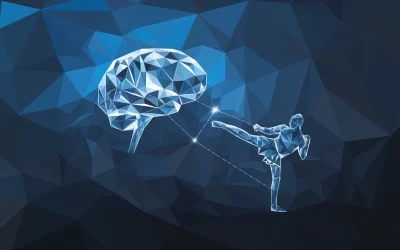Coordination is essential for effective technique and movement in martial arts. By examining principles of physics and biology, we can gain insight into how to better coordinate the body during training and competition. This article will explore key concepts like oscillation, entrainment, stability, transitions, and variability that influence coordination. Understanding these principles allows martial artists to optimize performance.
The Physics of Movement
Most martial arts rely heavily on limb movements and body oscillations. Legs, arms, and other limbs have mass and inertia that impact coordination. This is why physics provides a useful foundation for studying movement.
Isaac Newton’s laws of motion and studies of oscillating objects over the past 400 years give us established mathematical models. These models apply surprisingly well to coordinating limbs and body segments even with all their complexity.
The reason is that most locomotion in nature is cyclic. Whether it’s running, jumping, crawling, swimming, or flying, motions tend to repeat in cycles. Oscillation is what happens to heavy objects moving under gravity.
Describing Cyclic Motion
Since martial arts movements are often cyclic, we need language to describe where a limb or body segment is within its cycle.
On the left, a simple up/down oscillation over time. On the right, the same motion traced as a circle. Any repeating cycle can be mapped this way.
The phase measures progress through the cycle. A phase of 0° is at the start, 180° halfway through, etc. Phase gives a precise way to specify timing within a cycle.
Coupling and Entrainment
When two oscillating elements interact, they exhibit coupling or entrainment. Their motions become interdependent and coordinated.
Entrainment is visible when two pendulums suspended together exchange energy. Their swings synchronize through the physical connection.
This coupling of cycles applies to limbs and body segments. It’s a key mechanism enabling coordination.
Patterns of Coordination
Simple model systems help reveal basic patterns of coordination. These general principles apply broadly across animals and movements.
In-Phase and Anti-Phase
Kelso’s coordination dynamics model looks at finger wiggling. People easily coordinate their fingers in two main patterns:
In-phase – Fingers at identical points in their cycles. Movements mirror each other.
Anti-phase – Fingers offset by half a cycle. One finger moving up as the other moves down.
These modes emerge through coupling. Most people can’t immediately wiggle fingers in other phase relations.
Transitions
In the model system, anti-phase becomes unstable above a certain speed. Fingers naturally transition into in-phase oscillation.
Similar transitions happen in martial arts between techniques and strikes. What works at slower speeds may become inefficient or unstable when pushed faster. New coordination patterns take over.
Understanding intrinsic dynamics and transitions helps optimize techniques for different situations.
Stability and Variability
Coupled systems balance stability and flexibility:
Stability
In-phase and anti-phase finger wiggling represent stable states. Once established, the patterns resist change and persist.
Many trained martial arts techniques function this way. Through practice, certain coordinations become preferred stable modes.
Variability
But stable doesn’t mean permanent. Individual fingers still express their autonomy against synchronization.
Likewise, even well-trained techniques retain variability and adaptability. No movement pattern remains completely fixed.
Maintaining some flexibility is often an advantage. Movements can adjust to conditions.
Disruption and Transitions
Stability allows consistent technique, but variability enables adaptation. Shifting between states involves temporary loss of stability:
Before transitioning coordination patterns, a system goes “out of whack”. Fingers become uncoordinated right before settling into a new stable mode.
In martial arts, familiar techniques also break down before a major change like shifting footwork or weight distribution.
By recognizing signatures of impending transitions, practitioners can sense and initiate changes intentionally.
Optimizing Coordination
Concepts like stability, variability, transitions, and coupling give insight into coordinating movement. Martial artists can apply these principles:
- Evaluate techniques for built-in stability and flexibility
- Notice transition points between different coordinations
- Allow some variability within stable patterns
- Use coupling and entrainment judiciously to connect motions
- Shift strategies along with changing conditions
- Recognize and initiate transitions intentionally
Understanding the science of coordination enables continuously improving performance.
Coordination Science for Martial Arts
The physics of oscillation, biology of entrainment, and models of stability provide powerful tools for analyzing movement in martial arts. Mastering the principles of coordination dynamics allows martial artists to enhance their techniques. At Apex MMA, we incorporate these concepts into both training methodology and competitive strategy. By blending cutting-edge science with traditional practice, martial arts continue to progress and evolve.




0 Comments